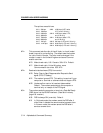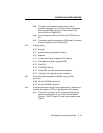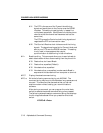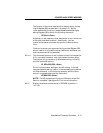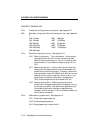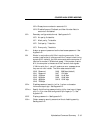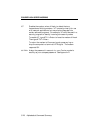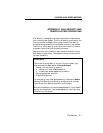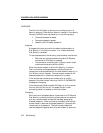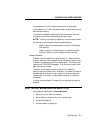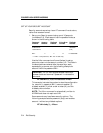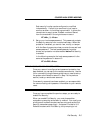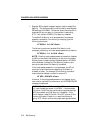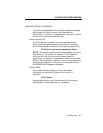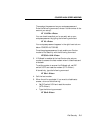
COURIER HIGH SPEED MODEMS
D-2 Dial Security
OVERVIEW
The Courier’s Dial Security allows you to configure up to 10
Security accounts. Each security account is stored in nonvolatile
memory (NVRAM) and may be set up in one of three ways:
• Automatic password access
• Prompted password access
• Password with Dialback protection
Autopass
Autopass is the term we use for the basic implementation of
Dial Security in the Courier modem. It is in effect whenever
Dial Security is enabled.
To use autopass alone, the following requirements must be met:
• Both host and remote modems must be U.S. Robotics
modems with Dial Security enabled.
• The connection must be under V.42 error control (both
modems must be set to &M4 or &M5).
When the remote modem is set for Dial Security, it automa-
tically includes an autopass password (configured by the
remote user to be compatible with the host modem’s security) in
its V.42 error control request. The host modem checks all the
enabled passwords in its security accounts for a match.
If the remote user has set up the modem with an invalid
password, the host modem returns an INVALID PASSWORD
message and hangs up.
If the remote user failed to enable Dial Security on the remote
Courier, the host Courier will not accept the call unless
prompting (below) is enabled on the host modem.
Prompting
While the use of autopass (above) is restricted to U.S. Robotics
Dial Security modems, prompting allows secured connections
with any remote modem whose user has been assigned an
allowed password. When prompting is enabled, and the host
modem doesn’t receive an autopass password, it prompts the
remote user for a password. The host modem checks the
received password against each of its active Security accounts.



